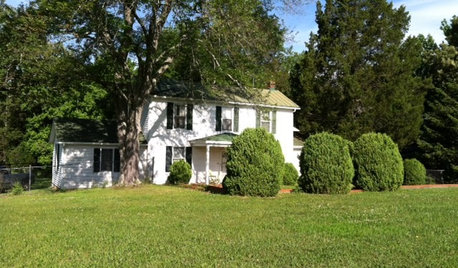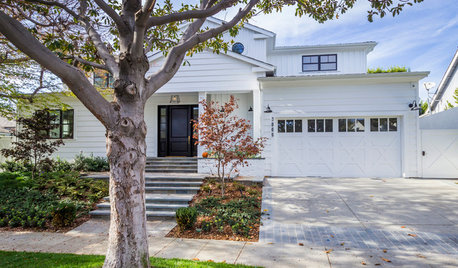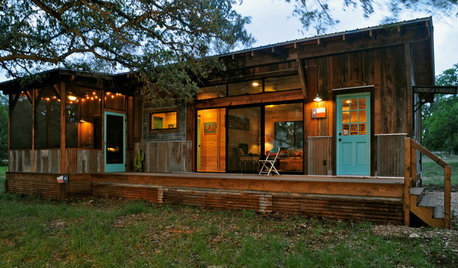To Till or Not? Part Two
theforgottenone1013 (SE MI zone 5b/6a)
10 years ago
Related Stories

LIFETime Travel to Houzzers' Childhood Homes, Part 2
Catch a glimpse of kit houses, bungalows, Tudors and more just as they were way back when — and listen in on the intriguing personal stories
Full Story
LIFETime Travel to Houzzers' Childhood Homes, Part 3
See postwar homes built by family members, rural farmsteads, cold-water flats and much more
Full Story
KITCHEN DESIGNAlternatives to Granite Countertops, Part III
9 more reasons to rethink the granite kitchen counter
Full Story
TRANSITIONAL HOMESHouzz Tour: Part Traditional, Part Modern and All Family Friendly
With clean lines, vintage touches and durable surfaces everywhere, this Los Angeles home balances tastes and needs beautifully
Full StoryLOFTSHouzz Tour: A Bachelor Pad’s Part II
A designer has a hand in two phases of this movie director’s life and his loft in a landmark Art Deco building in L.A.
Full Story
HOUZZ TOURSTwo Homes, Two Tributes to Dad
Father-son relationships shape the design of cherished family homes
Full Story
WINE CELLARSKey Measurements for a Wine Cellar, Part 2
Wine connoisseurs: A wine cellar can add a spectacular feature to your home
Full Story
DECORATING GUIDESGetting the Room Right: Part I
Great Spaces Show How to Avoid the Top 10 Decorating Mistakes
Full Story
KITCHEN DESIGNKitchen Takes Off in a Former Aircraft Parts Factory
Generous storage and clever carpentry transform a cluttered kitchen into a sleek, minimalist living space with an eclectic heart
Full Story
RUSTIC STYLEHouzz Tour: Salvaged Parts Form a New-Old Texas Hideaway
Reclaimed timbers and metal give an Austin-area prefab bygone soul
Full StoryMore Discussions







seysonn
pnbrown
Related Professionals
Canton Landscape Architects & Landscape Designers · Fillmore Landscape Architects & Landscape Designers · Oconomowoc Landscape Architects & Landscape Designers · Chesapeake Ranch Estates Landscape Contractors · East Chicago Landscape Contractors · Hawaii Landscape Contractors · Midland Landscape Contractors · New Baltimore Landscape Contractors · Oak Harbor Landscape Contractors · Parkland Landscape Contractors · Point Pleasant Landscape Contractors · Soddy Daisy Landscape Contractors · University City Landscape Contractors · Mount Vernon Driveway Installation & Maintenance · Crestwood Driveway Installation & Maintenancedaninthedirt (USDA 9a, HZ9, CentTX, Sunset z30, Cfa)
nancyjane_gardener
seysonn
pnbrown
seysonn
daninthedirt (USDA 9a, HZ9, CentTX, Sunset z30, Cfa)
wayne_5 zone 6a Central Indiana
daninthedirt (USDA 9a, HZ9, CentTX, Sunset z30, Cfa)
digdirt2
daninthedirt (USDA 9a, HZ9, CentTX, Sunset z30, Cfa)
theforgottenone1013 (SE MI zone 5b/6a)Original Author
pnbrown
daninthedirt (USDA 9a, HZ9, CentTX, Sunset z30, Cfa)
pnbrown
daninthedirt (USDA 9a, HZ9, CentTX, Sunset z30, Cfa)
nc_crn
daninthedirt (USDA 9a, HZ9, CentTX, Sunset z30, Cfa)
nancyjane_gardener
seysonn
pnbrown
lonmower
ediej1209 AL Zn 7
florauk
seysonn
daninthedirt (USDA 9a, HZ9, CentTX, Sunset z30, Cfa)
seysonn
daninthedirt (USDA 9a, HZ9, CentTX, Sunset z30, Cfa)
pnbrown
seysonn
wayne_5 zone 6a Central Indiana